Whew! English summer school with my extended family is over, and all projects are finished. To celebrate, we visited temples, museums, gathered with family and ate lots of Bhutanese food.

I’m saying good-bye to my friend Baby, whose English has improved vastly in the three weeks we held our home school. Here we’re at the National Museum in Paro overlooking the town and valley.
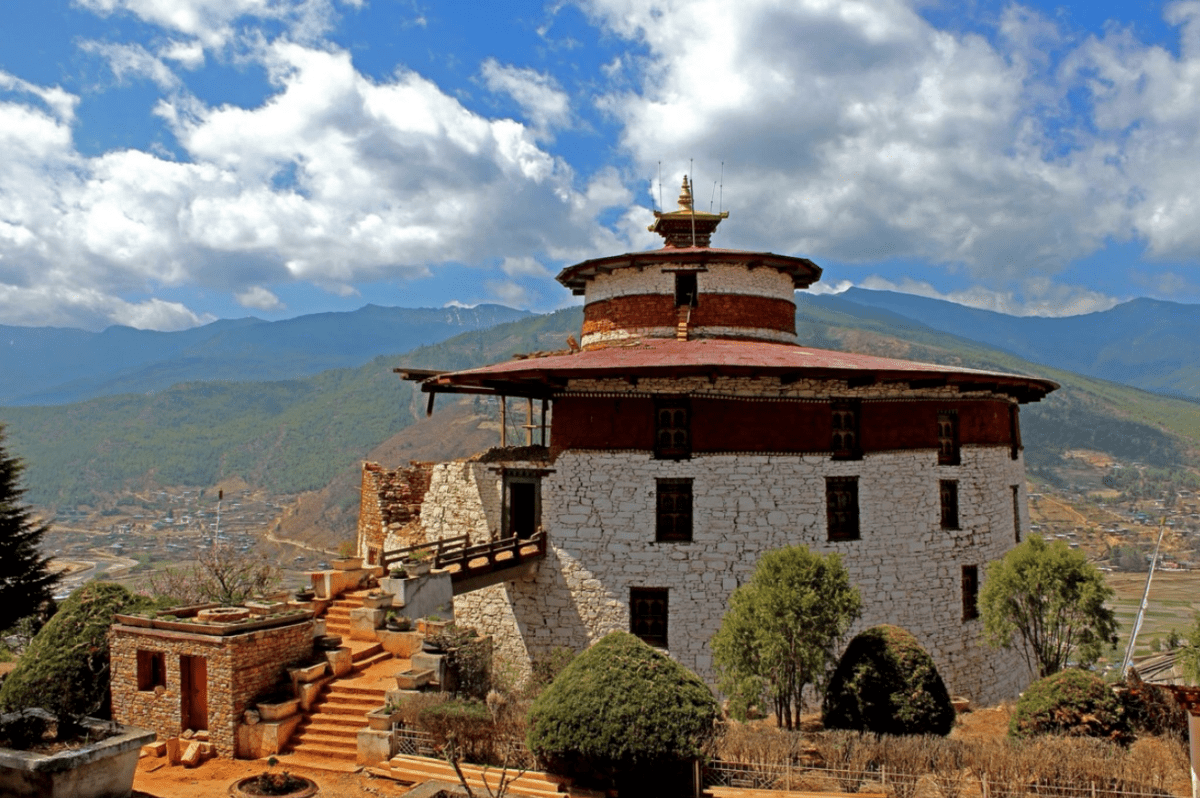
The National Museum of Paro sits on the hill overlooking the city. It contains a wealth of rare information about Bhutan’s history, traditions, and natural beauty.

This is the Rinpung Dzong, the largest Dzong and fortress in Paro. It was built by Rinpoche Padmasambhava in the 7th century. Then in 1644 the father of Bhutan, Zhabdrung Rinpoche, dismantled it and build a new dzong. The dzong’s full name, Rinchen Pung Dzong, means ‘Fortress on a Mountain of Jewels’.

The fort was needed on many occasions to defend the Paro valley from invasions by Tibetan armies. A British political officer John Claude White reported that in 1905 there were still old catapults for throwing huge stones stored in the rafters of the dzong’s roof.
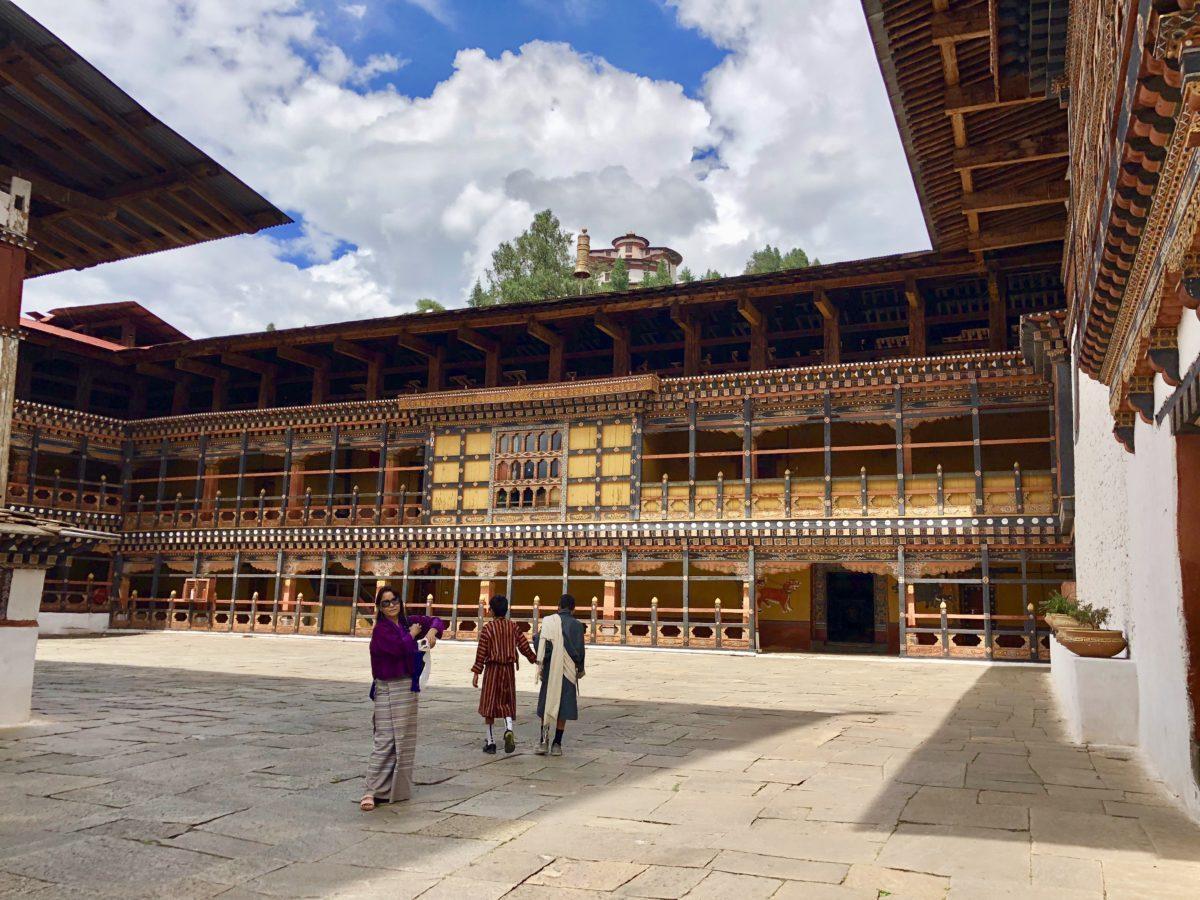
Inside the Dzong is a large open space surrounded by monks’ living quarters. The National Museum is above on the hill.
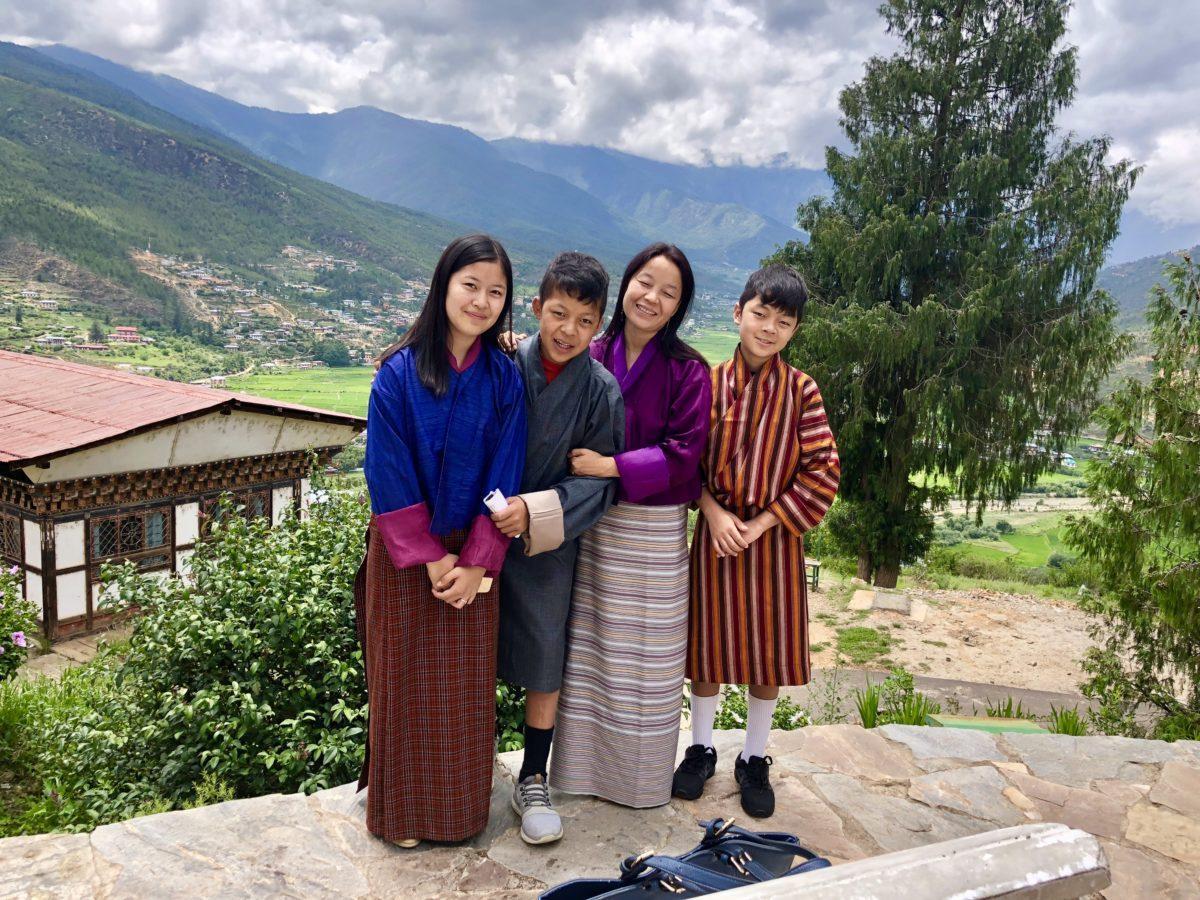
A family portrait after our visit to the National Museum. I’m going to miss these kids!
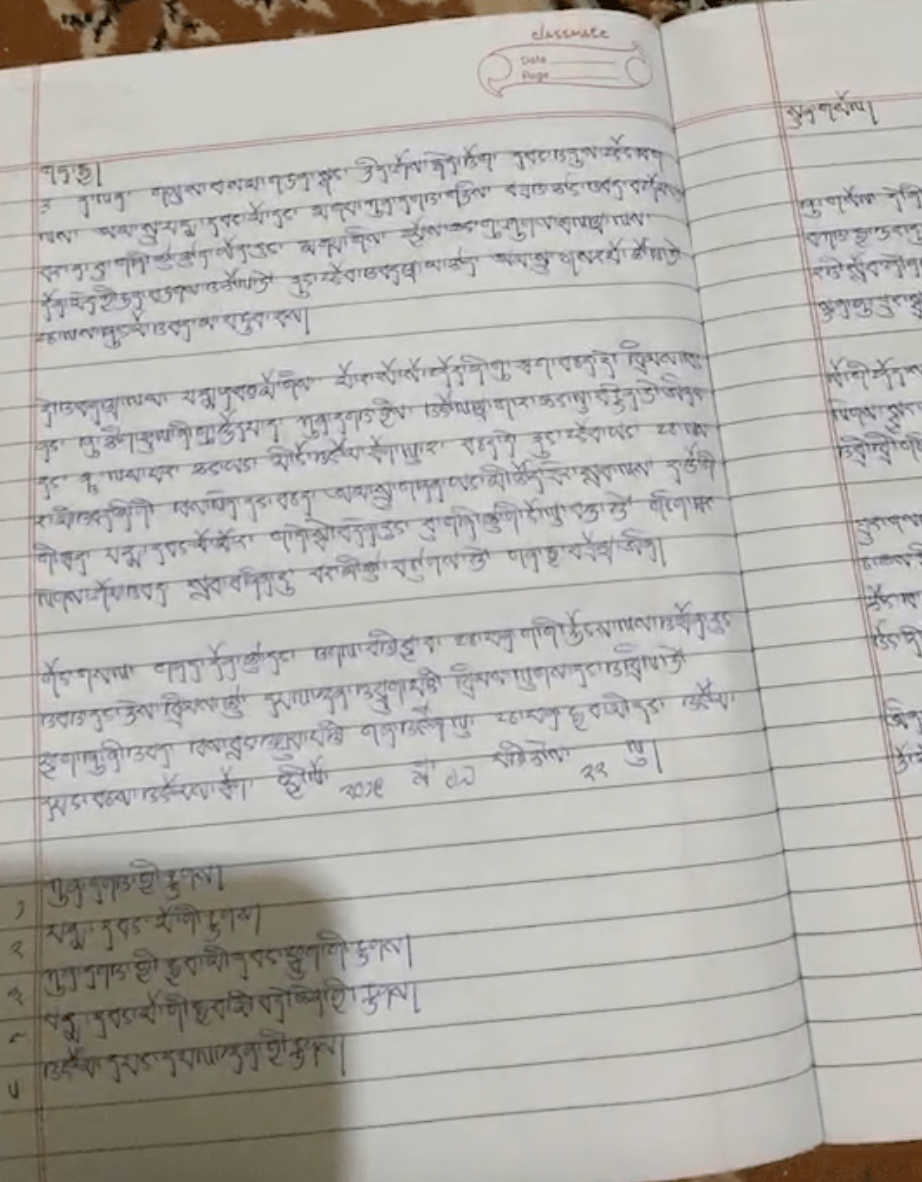
Baby’s final project for 12th grade was a 10-page paper in Dongkha. Although the Bhutan school system conducts most classes in English, Dzongkha is required and the national language is heavily emphasized, including spelling, grammar, and penmanship. Her precise work astounds me!

The Paro Dzong stairs are very steep. It is truly a fortress, protecting the administrative and religious center of the region. It would be extremely difficult for enemy Tibetan armies to invade this building.
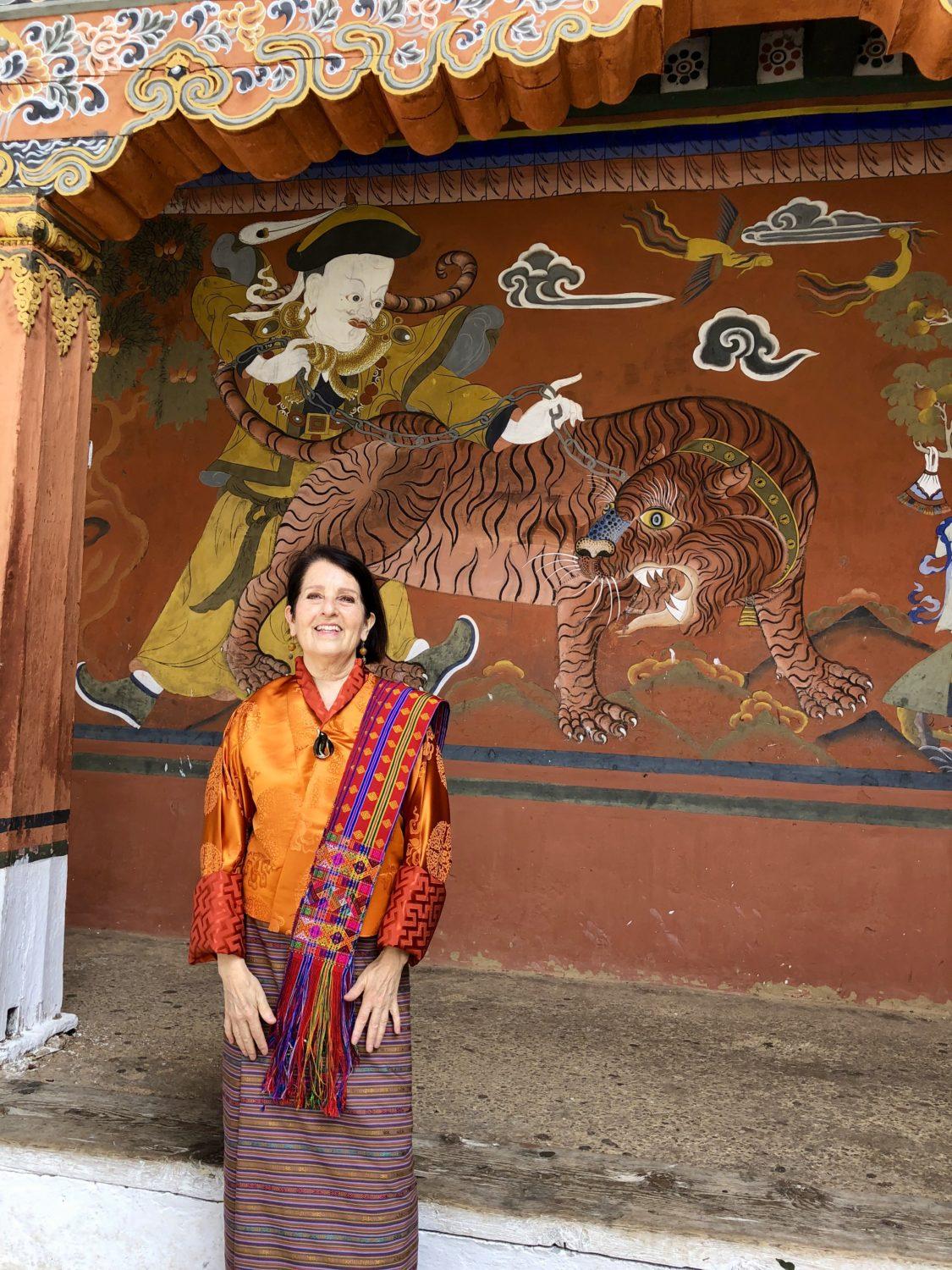
The walls of the Paro Dzong are beautifully painted with symbolic images illustrating the history of Bhutan. I understand this one is Rinpoche Padmasambhava with a tiger.

Baby stands in front of a painting of the Four Harmonious Friends. This is a popular scene in dzongs, from a legend about an elephant under a fruit tree carrying a monkey, a hare and a bird. The four animals debate who is the oldest. The elephant says the tree was already fully grown when he was young, the monkey says the tree was small when he was young, the hare says he saw the tree as a sapling when he was young, and the bird claims he excreted the seed from which the tree grew. Thus the bird is recognized as the winner and the oldest. The four animals live together in co-dependence and cooperation, helping each other to enjoy the fruits of the tree. The story is as an illustration of cooperation and respect for seniority and wisdom.

This is just one side of an extraordinary wall of paintings at the entrance of the Paro Dzong.
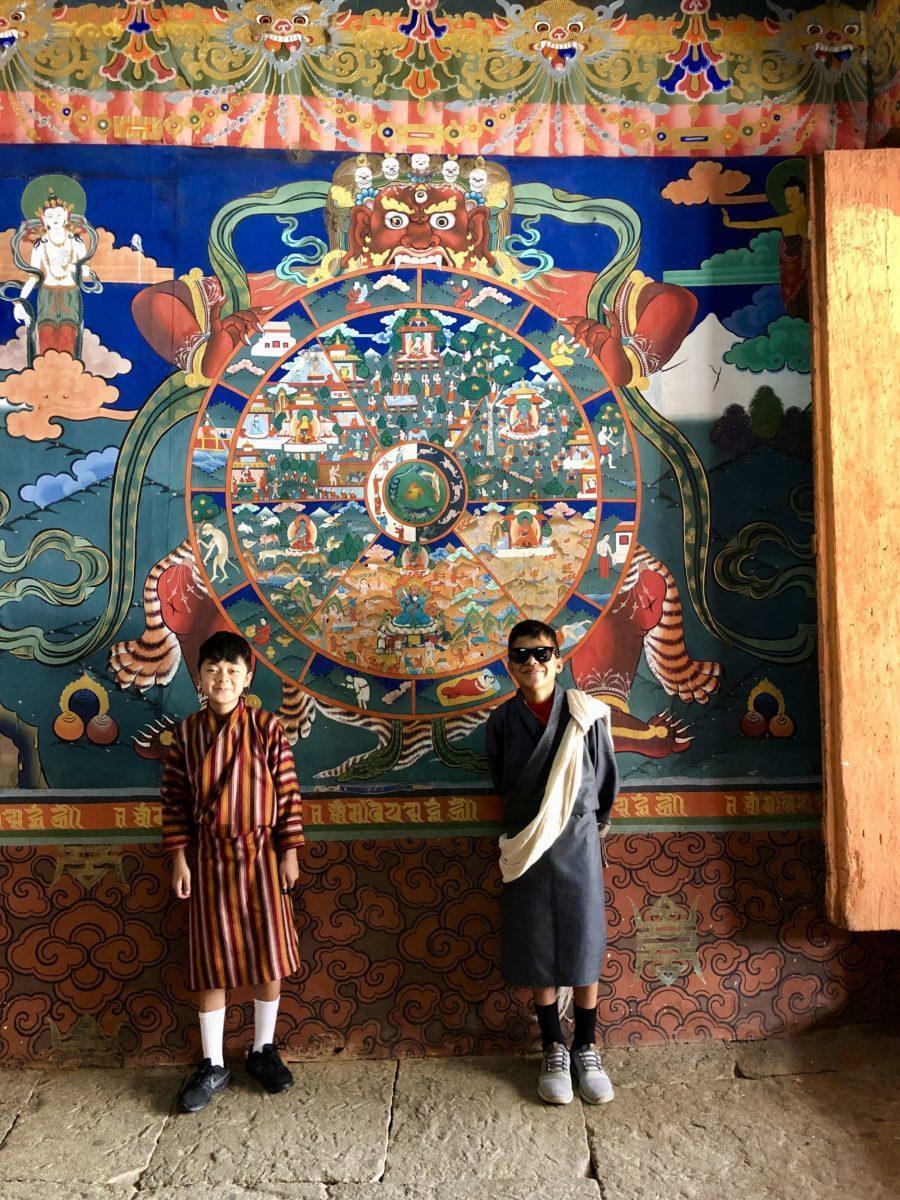
This Kalachakra painting shows the Wheel of Life and the six realms of existence. The three realms at the top are better and the three at the bottom are to be avoided at all costs. Top three realms from left to right are the Human Realm, the highest Realm of the Gods, and Asura realm of the demi-gods – who are frequently in conflict. At the bottom left is the Animal Realm. The very bottom is the Hell Realm, in which Yama Dharmaraja, the Lord of the Dead and King of Karma holds a stick in his right hand and a mirror in the left to reflect the actions back to the perpetrator. On the lower right is the Preta Realm of the hungry ghosts. The boys explained to me in great detail that hungry ghosts suffer from extreme hunger and thirst. Food and water burns their skinny necks as it goes down with great difficulty into their distended bellies, causing them intense agony. This realm is for miserly people who hoard their wealth. Better not go there!

We visited a very old museum of a wealthy leader from the 17th century. This is a plow for two oxen to prepare the fields for planting.
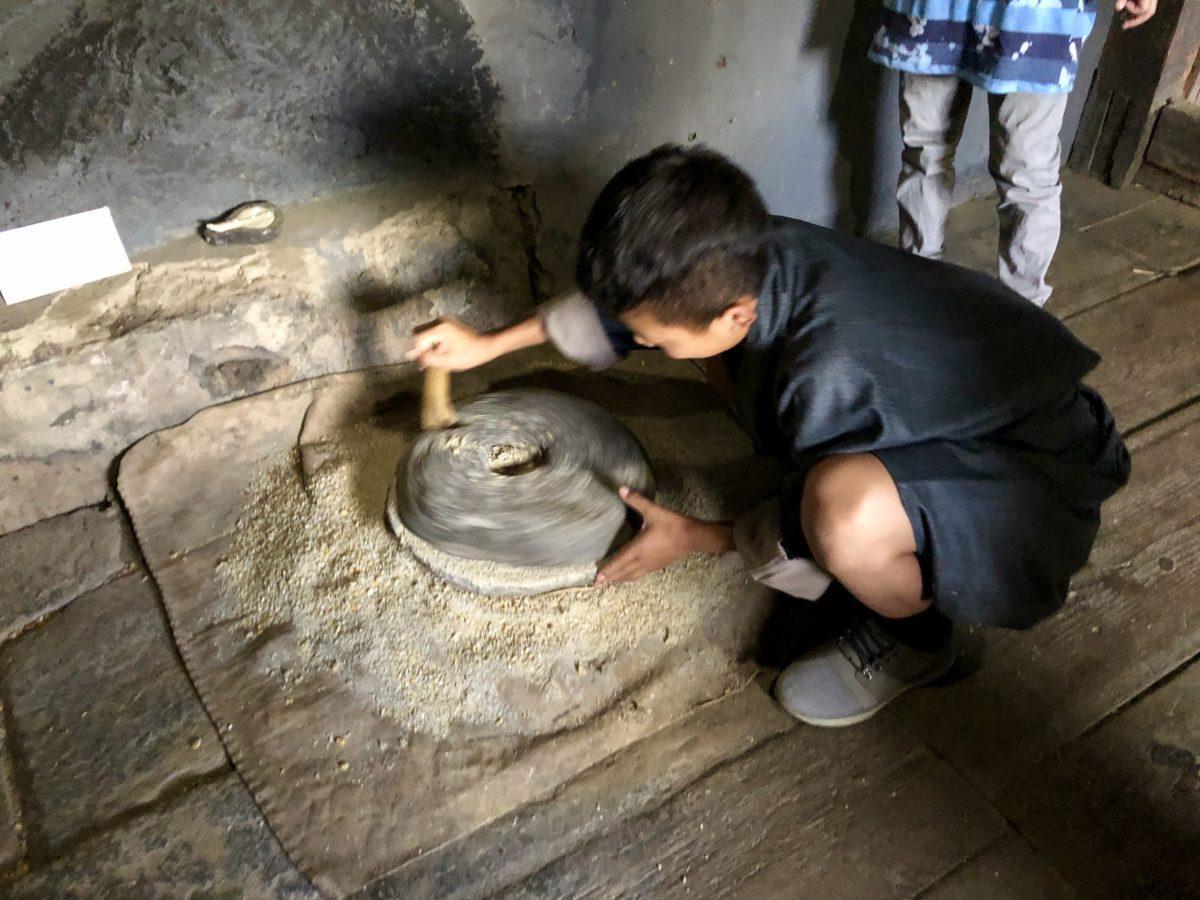
Kunga Palden demonstrates a 17-century grinder for flour. Many grains were used in it including rice, buckwheat, millet, barley, oats, and corn.
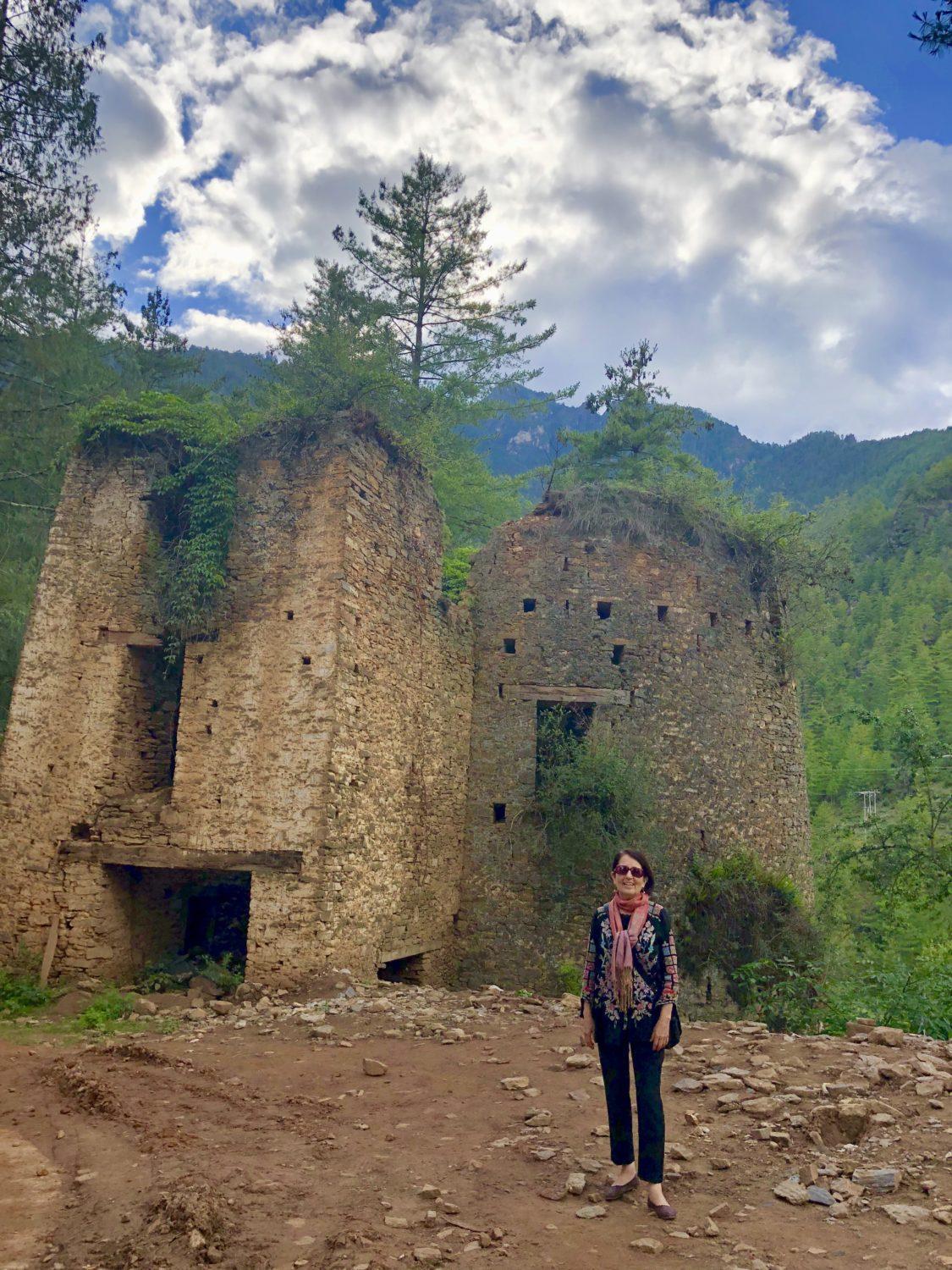
We visited an ancient dzong on a hill west of Paro built by Zhabdrung Rinpoche in the 17th century. It is just now being rebuilt, and we saw the amazing new construction, to be completed in the next two years.

This is Kunga Norbu, Baby (Tshering Yangdon), and Kunga Palden. Yep, I’m going to miss these kids.

This is a wooden pasta machine still used in some parts of Bhutan. Just make some dough, lift the handle, put it in a compartment between the two pieces of wood, and sit on the handle. Presto! Your pasta comes out underneath.
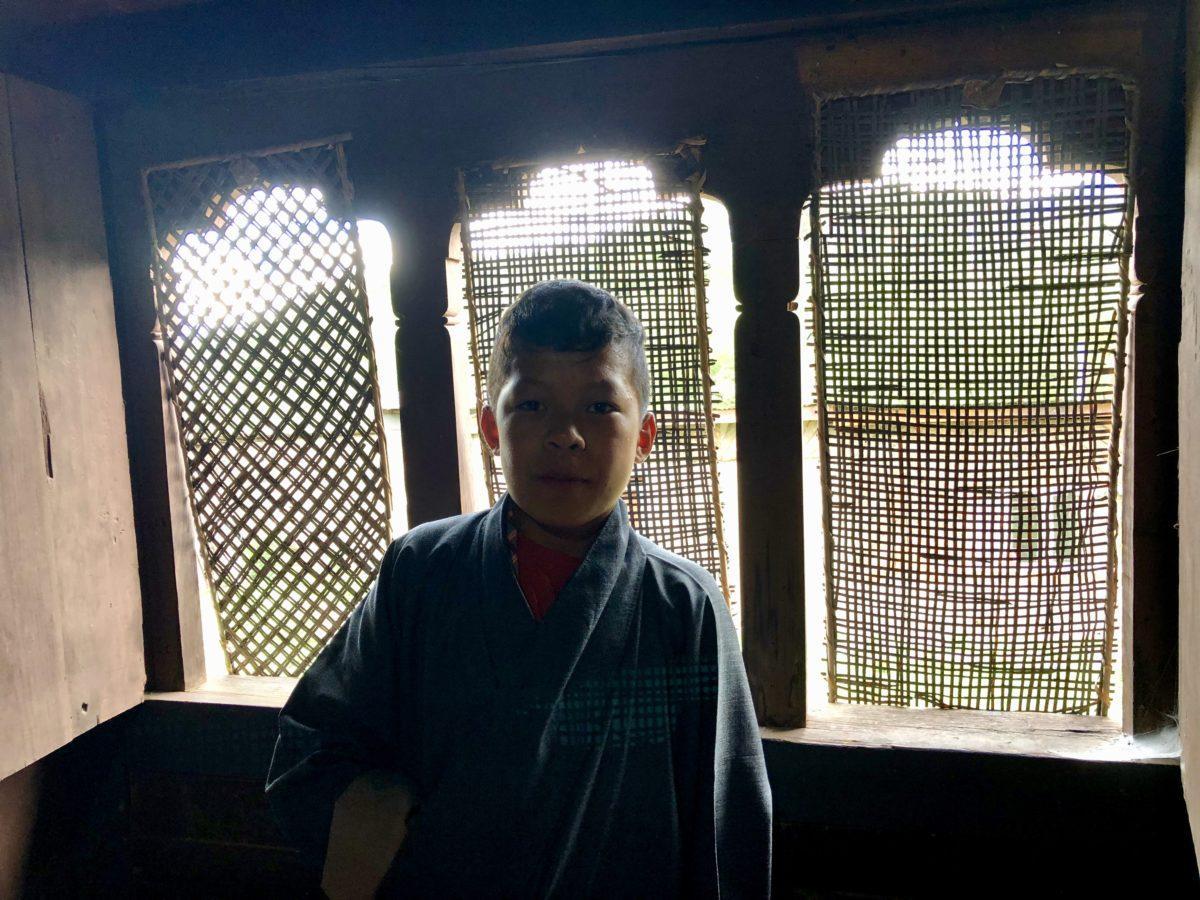
Bhutanese windows had no glass 400 years ago. Instead the shutters open from inside. Hand woven screens allow light to come in while keeping bugs out. Kunga Palden looks so handsome in his father’s gho, the traditional men’s wear.
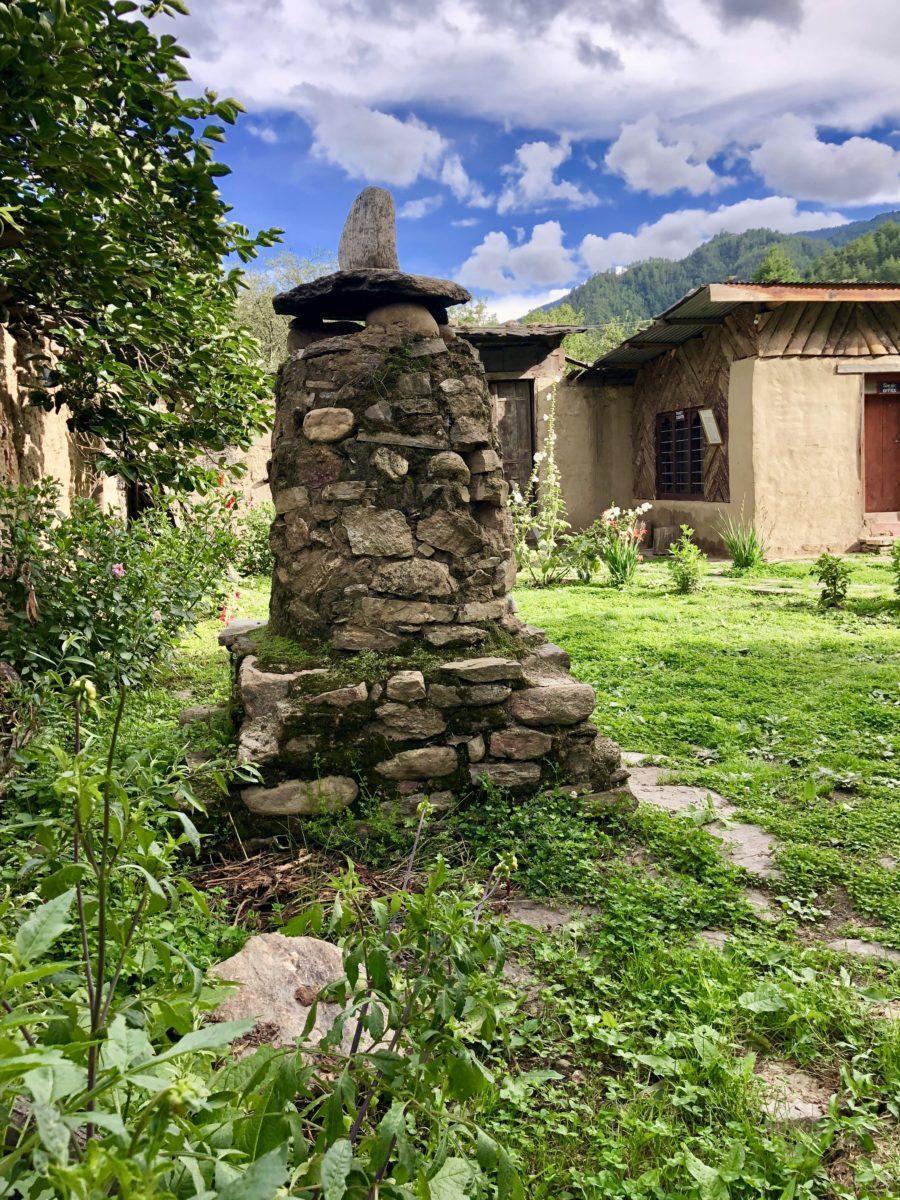
This charming chorten from the 17th century sits in the entry garden of a wealthy home that’s now a museum. A chorten (མཆོད་རྟེན་དཀར་པོ།) is an important religious monument symbolizing Buddha’s presence. It often holds precious Buddhist relics and serves to bless the home.

School starts August 1st. Back-to school shopping included a new camouflage shirt for Kunga Norbu.
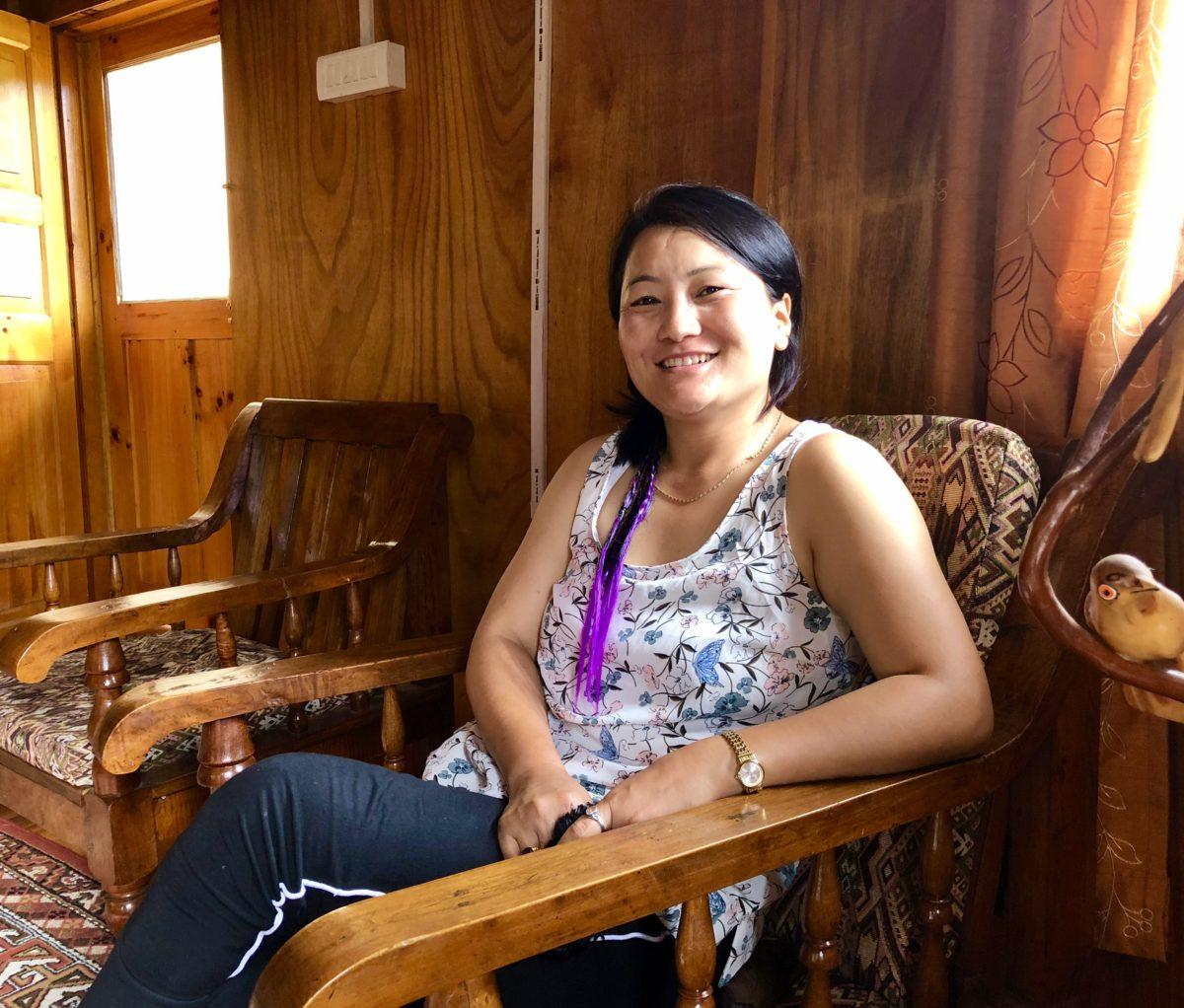
Pama Lhamo is my beautiful sister, or rather sister-in-law, married to Lama D’s brother Phub Dorji. She very generously took me shopping yesterday and showed me all the best places to buy groceries in Paro.

After shopping with Pema Lhamo, her husband Phub Dorji made an amazing lunch for the family. Rice, Pork with peppers, Emma Datshi, Radish with Homemade cheese, Asparagus, and Suja – butter tea.
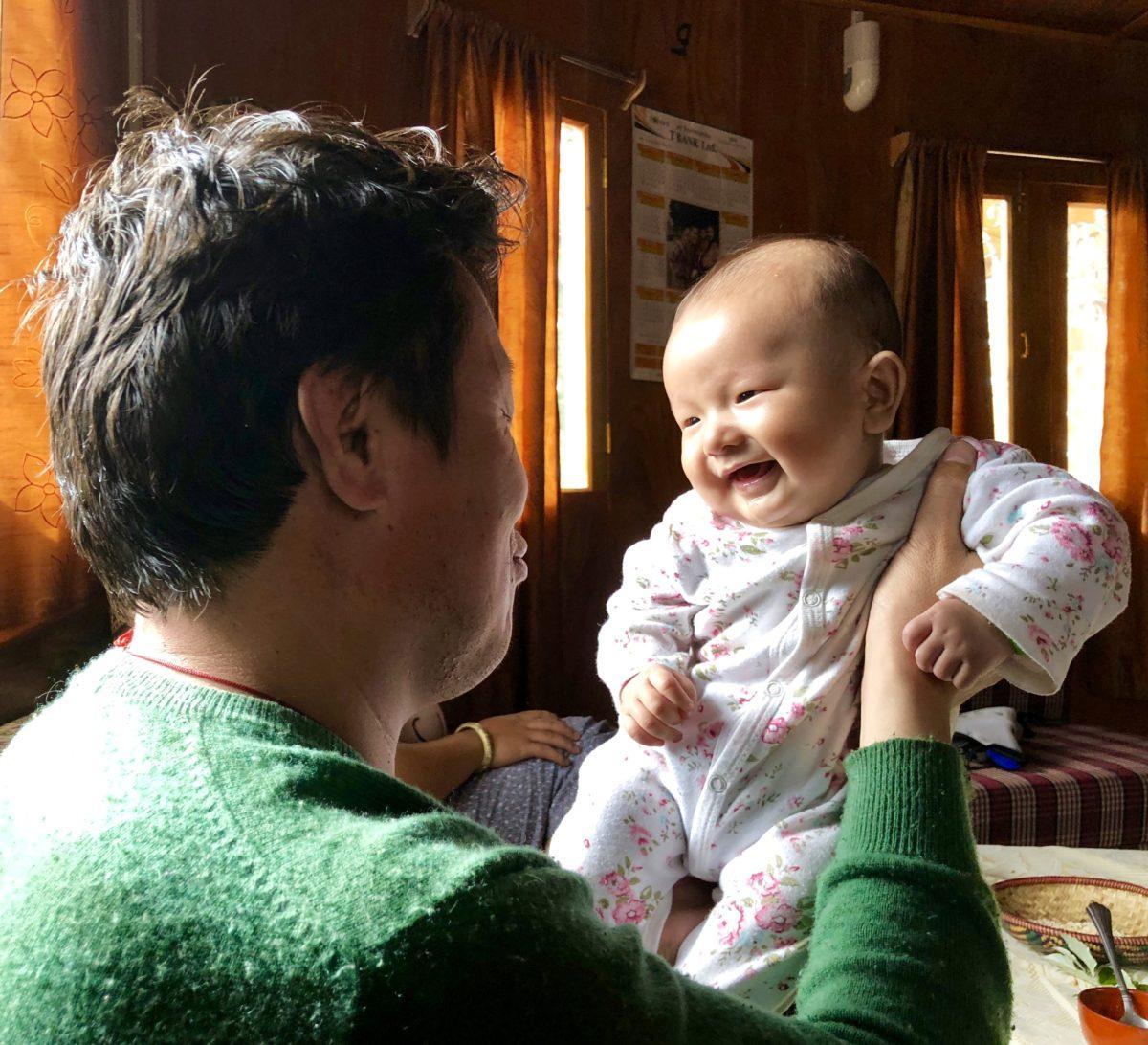
Lama D. is amazing with babies! Here he’s entertaining Boy Boy, the newest son of my sister Thuji Zam, in our living room.
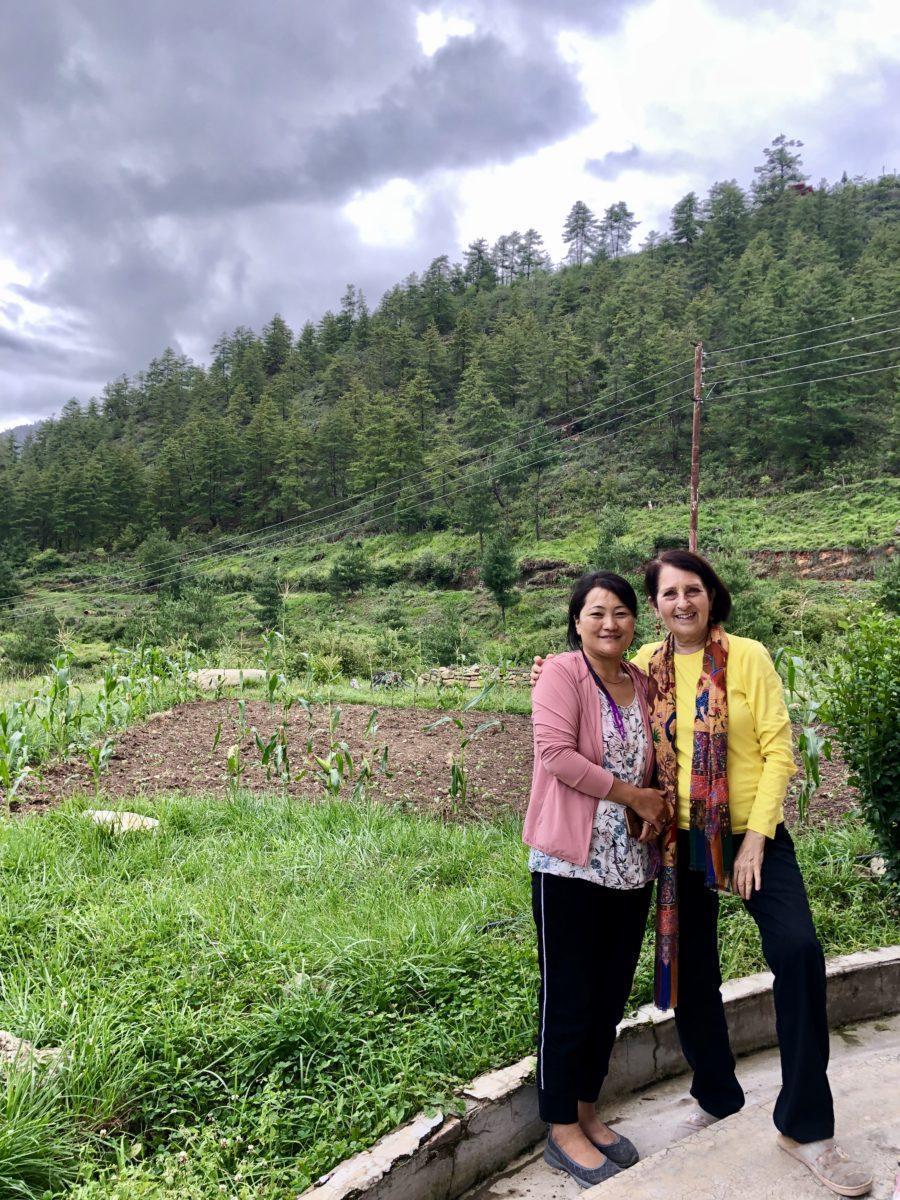
I had a fun day with my sister Pema Lhamo, shopping, eating and spending time with family. This is in front of our house.
Thanks for stopping by! My books are coming along well.
Next post will probably be Friday August 2nd. Have a great week!


